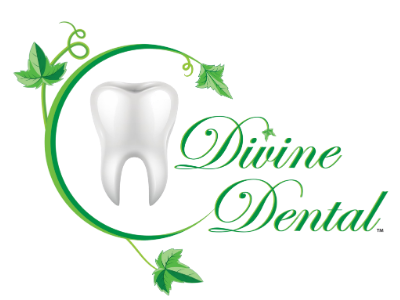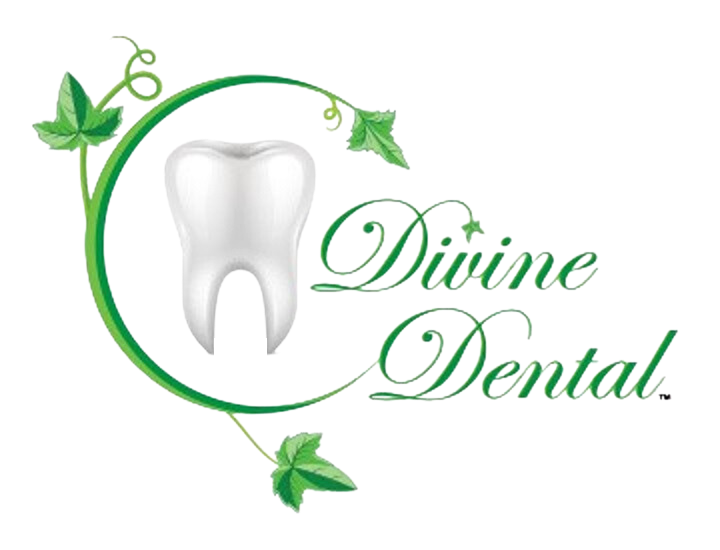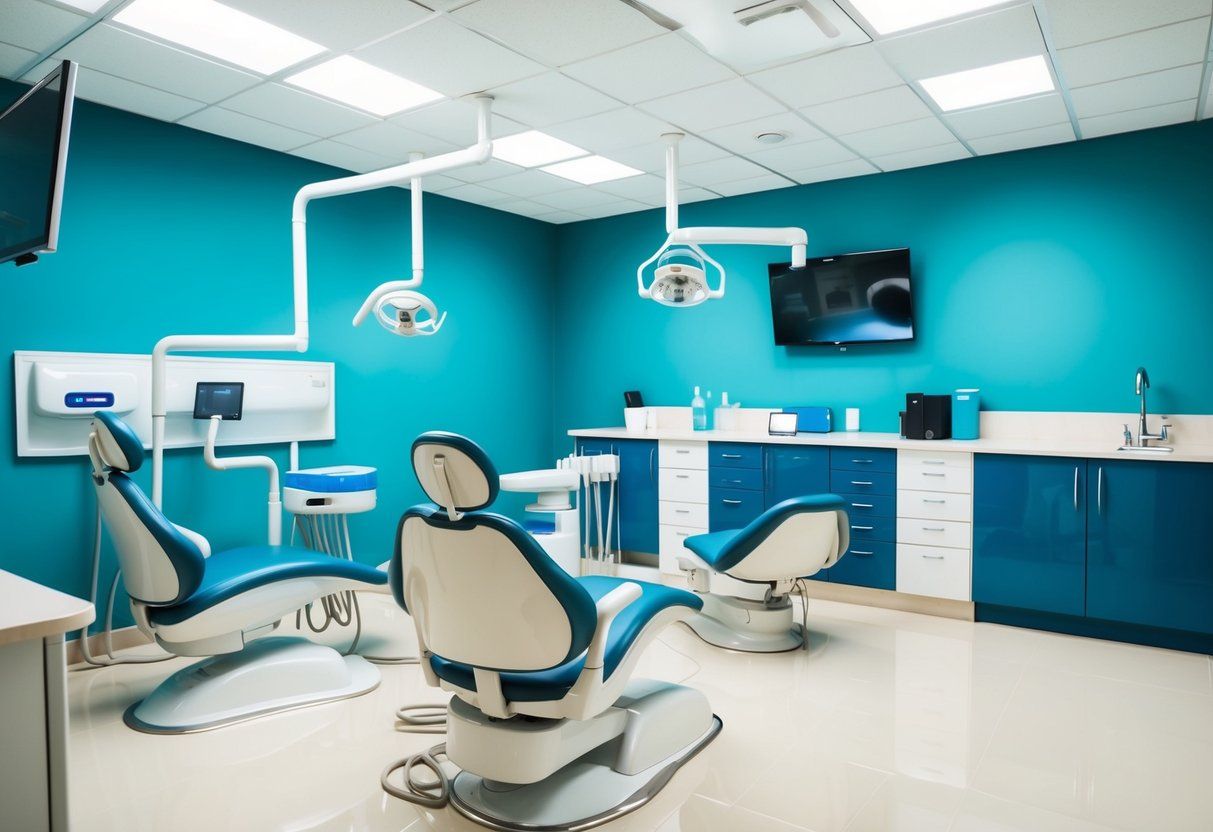What to Expect During a Cosmetic Dentistry Consultation: Process and Treatments
A cosmetic dentistry consultation is the first step toward improving a smile. During this appointment, the cosmetic dentist reviews the patient’s dental health, listens to their goals, and performs an exam to assess what treatments might work best.
Patients can expect a detailed discussion about their smile goals and a thorough check of teeth, gums, and bite. Many dentists use technology like digital smile simulations to show potential results.
Common treatments discussed include teeth whitening, veneers, bonding, and Invisalign. This visit also gives patients a chance to ask questions about costs, treatment timelines, and care after procedures.
Key Takeaways
- A cosmetic dentist evaluates dental health and goals to create a tailored treatment plan.
- The consultation includes a detailed exam and discussion of various cosmetic options.
- Patients gain clear information on costs, timelines, and aftercare for their treatment.
Purpose and Benefits of a Cosmetic Dentistry Consultation
A cosmetic dentistry consultation is the first step toward achieving a personalized smile makeover. It helps clarify specific smile goals while addressing both appearance and oral health.
The visit provides a chance to discuss options, understand treatment details, and plan effectively.
Why Consider a Cosmetic Dentistry Consultation
A consultation helps patients understand what cosmetic dentistry can do for them. It allows the dentist to review medical and dental history, ensuring treatments suit individual health needs.
Patients can express their smile goals, whether it is whiter teeth, fixing gaps, or correcting chipped teeth. During the visit, the dentist evaluates if the patient is a good candidate for procedures like veneers, bonding, or teeth whitening.
The consultation also helps set realistic expectations about treatment results, timelines, and costs. This step prevents surprises and helps patients make informed decisions that match their needs.
Boosting Confidence Through a Confident Smile
A well-planned smile makeover can have a direct impact on a person’s confidence. Many people seek cosmetic dentistry to improve how they feel about their appearance.
A confident smile can influence social interactions, job opportunities, and overall self-esteem. During the consultation, the dentist discusses how different treatments can enhance the patient’s unique features.
This approach ensures results look natural and balanced. Understanding options and seeing smile simulations can help patients feel hopeful and committed to their cosmetic journey.
Evaluating Both Aesthetic and Functional Needs
Cosmetic dentistry is not only about looks but also function. The consultation includes a thorough oral exam, checking teeth alignment, gum health, and bite function.
This ensures treatments do not just improve appearance but also maintain or enhance oral health. Addressing underlying issues like gum disease or bite problems may be necessary before cosmetic work begins.
This evaluation prevents complications and supports lasting treatment outcomes. The goal is a healthy, attractive smile that feels comfortable and works well.
Preparing for Your Cosmetic Dental Consultation
Proper preparation helps the consultation run smoothly and ensures the dentist can assess needs accurately. This includes organizing important health details, understanding personal goals for the smile, and coming ready with key questions.
Gathering Dental and Medical History
The patient should bring complete dental records if possible. These include past X-rays, notes on previous treatments like fillings, braces, or extractions, and any current dental issues.
This information helps the dentist identify any underlying problems. Medical history is important too.
The dentist needs to know about medications, allergies, and general health conditions, as these can affect treatment choices and safety. Having this information ready saves time and provides the dentist with a clear picture to create an effective treatment plan tailored to the patient’s needs.
Identifying Personal Smile Goals
Patients should think about what they want to change or improve in their smile before the visit. This could be whitening, straightening teeth, fixing chips, or reshaping teeth.
Clear goals allow the dentist to recommend treatments that best fit the patient’s desires and lifestyle. It also helps set realistic expectations about what can be achieved and in what time frame.
Writing down specific goals or bringing photos of smiles they like can help make the conversation with the dentist more focused and productive.
Questions to Bring to Your Appointment
Patients should prepare a list of questions to ask during the consultation. Important topics include:
- Which procedures best match their goals
- Cost and financing options
- Treatment timeline
- Potential risks or side effects
- Maintenance after treatment
Having these questions ready ensures the patient fully understands the process and feels confident about the treatment decisions.
Initial Assessment and Discussion
The first part of a cosmetic dental consultation focuses on gathering important information and understanding the patient’s main concerns. This sets the foundation for a personalized treatment plan.
Warm Welcome and Communication
The consultation begins with a friendly introduction from the dental team. Patients usually fill out forms about their dental history, current medications, and any health conditions.
This step is crucial because it helps the dentist identify factors that might affect treatment choices. Clear communication is a priority.
The staff explains the consultation process and encourages patients to share all relevant details, including habits like teeth grinding or past dental work. This helps avoid surprises and ensures treatments are safe and suitable.
Understanding Your Cosmetic Concerns
During this phase, the dentist asks detailed questions about what the patient wants to improve in their smile. This might include whitening teeth, fixing chipped or misaligned teeth, or closing gaps.
The dentist listens carefully to specific goals. Patients are encouraged to be honest and precise about what bothers them.
This information directs the dentist in suggesting treatment options that match both aesthetic desires and oral health needs. By focusing on the patient’s individual concerns, the dentist can tailor a plan that balances appearance with function.
Comprehensive Oral Examination and Diagnostics
A detailed check of the mouth and teeth is key to planning cosmetic treatments. This process includes carefully looking at dental health and using technology to find issues that may not be visible with the naked eye.
Oral Exam and Dental Health Evaluation
The dentist examines teeth, gums, and bite during the oral exam. They check for signs of tooth decay, gum disease, and how well the teeth line up.
Healthy gums and teeth are essential for successful cosmetic work. The dentist also looks for problems that could affect treatment results.
Issues like worn enamel or misaligned teeth may need to be treated first. This exam helps protect oral health and ensures cosmetic procedures do not cause harm.
Use of X-rays and Digital Imaging
Digital X-rays and scans provide detailed views of teeth roots, bone structure, and gum health. These tools reveal hidden problems such as cavities, bone loss, or infections not visible in a regular exam.
With advanced imaging, the dentist can create precise treatment plans. Technology helps them understand tooth positions and plan procedures like veneers, crowns, or braces better.
It also aids in tracking progress during treatment.
Discussion of Treatment Options and Smile Simulation
Cosmetic dentistry consultations provide detailed treatment choices tailored to individual needs. They also use visual tools to help patients see potential results.
Reviewing Personalized Treatment Options
The dentist reviews various treatments based on the patient’s dental health and goals. Common options include teeth whitening to brighten stains, veneers for reshaping or covering imperfections, and bonding to repair chips or close gaps.
For teeth alignment or correcting misaligned teeth, orthodontic solutions like Invisalign or braces may be recommended. If teeth are missing or damaged, crowns or implants are discussed to restore function and appearance.
A clear outline of each procedure’s benefits, duration, and cost helps patients understand their choices. This personalized review ensures the treatment plan is practical and matches the patient’s smile expectations.
Smile Simulation Technology
Smile simulation software allows patients to visualize the potential outcome of their smile makeover. This technology digitally alters photos of the patient’s teeth, showcasing possible results from various treatments.
By seeing how veneers, whitening, or tooth alignment could enhance their smile, patients gain a clearer idea of expected changes. This helps in making informed decisions and boosts confidence in the treatment plan.
Simulation can also highlight how specific treatments will affect features like tooth shape, color, and positioning. It provides an interactive experience that bridges the gap between consultation and final results.
Prioritizing Cosmetic Dental Procedures
After discussing options, the dentist and patient prioritize treatments for a step-by-step plan. Health issues are addressed first, such as gum disease or tooth decay, to ensure a strong foundation before cosmetic work.
Cosmetic enhancements come next, often starting with teeth whitening or orthodontics to improve overall appearance. More complex procedures like veneers or crowns are scheduled later depending on timeline and budget.
This prioritization balances immediate needs, cosmetic benefits, and recovery times. It ensures the treatment process is manageable and effective.
Personalized Treatment Plan and Next Steps
After the consultation, the dentist creates a customized treatment plan. This plan outlines the steps needed to achieve the desired smile, the order of treatments, and the expected time they will take.
Clear communication about timing and costs helps patients make informed decisions.
Establishing a Treatment Timeline
The dentist outlines a schedule tailored to the patient’s goals and dental health. Simple treatments like teeth whitening may take only one or two visits.
More complex procedures, such as veneers or Invisalign®, typically require several appointments spread over weeks or months. The timeline considers healing periods between treatments.
For example, bonding or crowns may need time to set properly. The dentist will explain when each step happens and how long the whole process might last.
This helps patients plan their visits and set realistic expectations.
Understanding Costs, Insurance, and Financing
Costs depend on the types of procedures chosen and how many are needed. The dentist provides a detailed estimate covering the entire treatment plan, including any follow-up visits.
Many cosmetic procedures are not fully covered by dental insurance. The dentist or office staff will clarify what expenses insurance may cover and what will be out-of-pocket.
Financing options might be available to help manage payments. These can include payment plans or third-party financing companies.
Patients are encouraged to ask about all available options to find a solution that fits their budget.
Frequently Asked Questions
This section answers key concerns about the cosmetic dentistry consultation. It covers what patients experience, how to prepare, common treatments, timing, procedure steps, and recent technology.
What can I expect during my initial cosmetic dentistry consultation?
The dentist will ask about your dental concerns and smile goals. They will examine your teeth briefly to assess your needs.
After the review, the dentist discusses treatment options that fit your goals. You will learn about possible procedures, timelines, and costs.
How should I prepare for a cosmetic dentistry appointment?
Bring a list of your dental concerns and what you want to improve. It’s helpful to have photos of smiles you like for reference.
Also, prepare any dental records or X-rays you have. Wear comfortable clothing and be ready to discuss your budget.
What common cosmetic dental treatments are typically discussed during a consultation?
Teeth whitening, veneers, dental bonding, and Invisalign® are often reviewed. These procedures address brightness, shape, alignment, and tooth damage.
The dentist may suggest one or a combination of treatments depending on your smile goals and dental health.
How long is the typical cosmetic dental consultation and what is involved?
Consultations usually last 30 to 60 minutes. The visit includes talking about your goals, a dental exam, and discussing a personalized treatment plan.
You will also have time to ask questions and understand the next steps.
Can you explain the before and after process of common cosmetic dental procedures?
For teeth whitening, the dentist cleans your teeth then applies a whitening agent. Results usually appear after a few sessions.
Veneers involve removing a thin layer of enamel, taking impressions, and placing custom shells on teeth. Bonding uses tooth-colored resin applied and hardened with light.
Invisalign uses a series of clear aligners adjusted every few weeks to straighten teeth over months.
What are the latest advancements in cosmetic dentistry that may be available to me?
Digital imaging helps plan your smile makeover with accuracy.
New materials for veneers and bonding provide more natural looks.
Laser treatments offer less invasive options for gum reshaping.
Clear aligners continue improving in comfort and effectiveness.…




